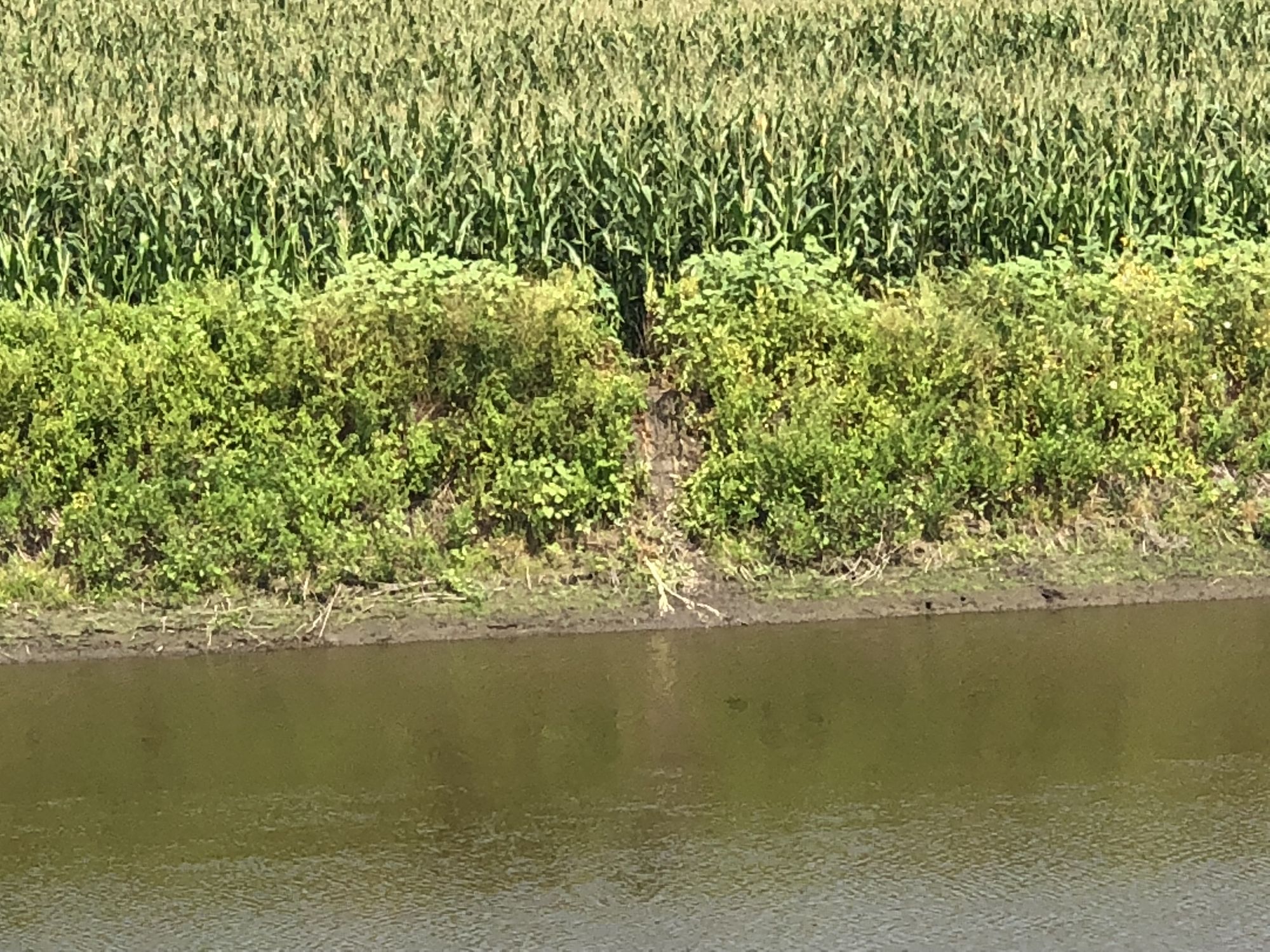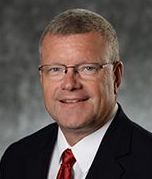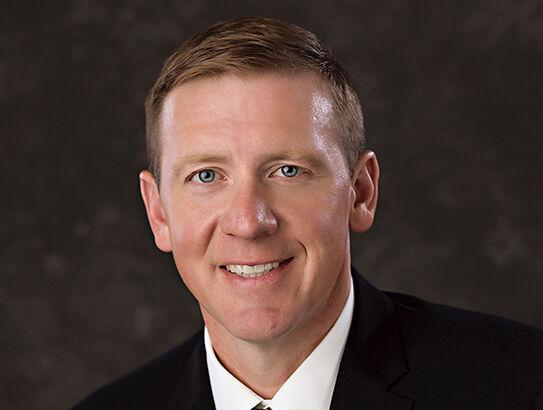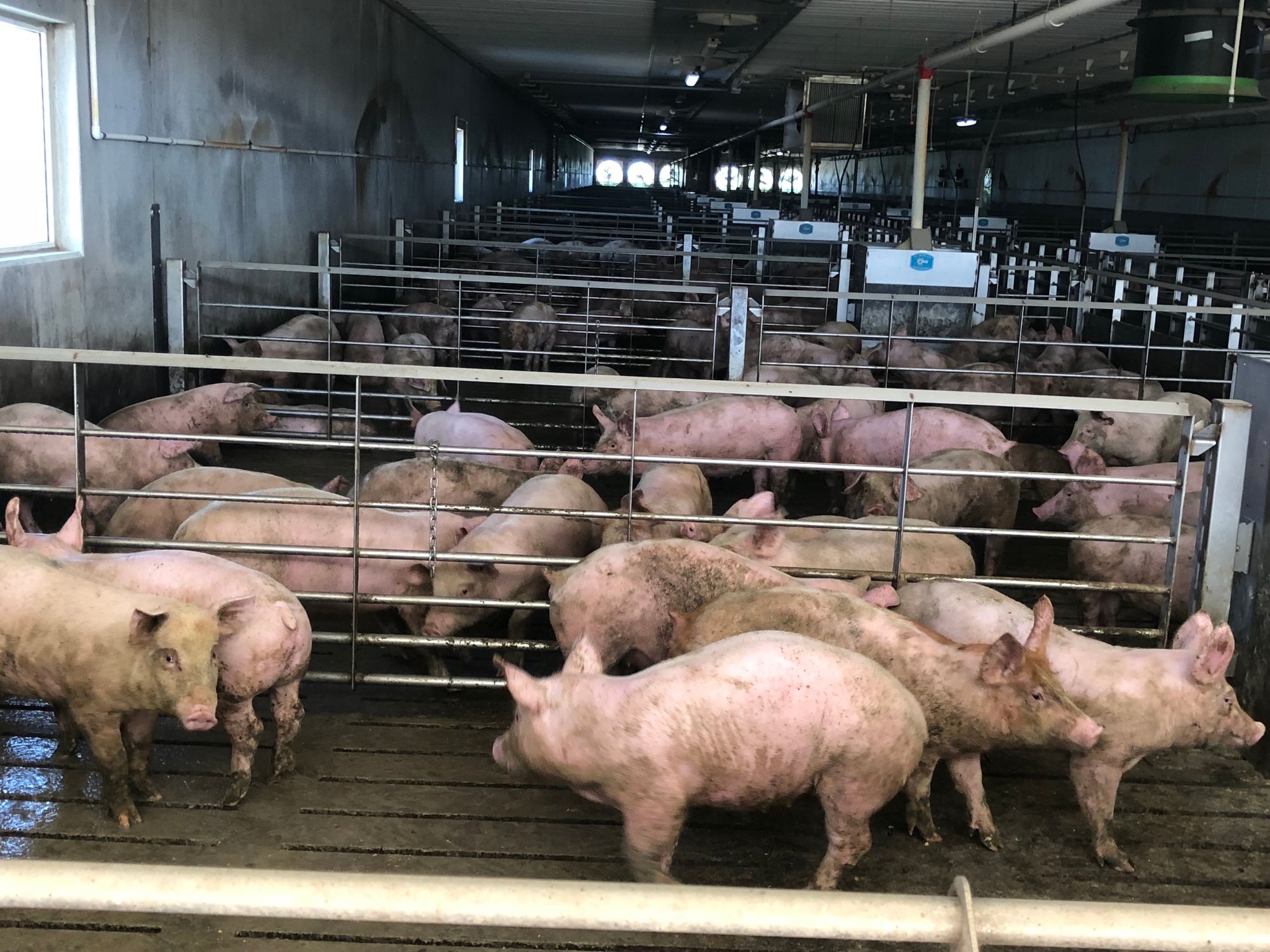PIERRE, S.D. – Some South Dakota farmers, ranchers and environmental advocates are concerned about Gov. Kristi Noem’s plan to combine the state Department of Agriculture and Department of Environment and Natural Resources into a single agency and are wondering what the new agency could mean for the state’s largest industry and the regulation of agricultural practices and pollution.
So far, almost no details have been released about the merger and the new agency that will result, causing concern among many whose lives and livelihoods depend on agriculture and the successful regulation of the industry.
Based on a News Watch analysis of surrounding states, South Dakota would become the only state in the Great Plains region that does not separate its environmental protection agency from its department of agriculture.
The planned merger has the potential to profoundly reshape the complex relationship between agriculture, the environment, and the people charged with promoting and regulating the industry. But the governor’s office has not yet released a plan on how the new agency will work, what the merger will cost or save in terms of tax dollars, if state employees will lose their jobs, what its budget will be or how regulation may be affected.
Some South Dakota agricultural leaders are concerned that the current Department of Agriculture’s mission to “promote, protect and preserve” the industry could be diminished under the new department.
Environmental advocates, meanwhile, say they are worried that the DENR’s mission to protect public health and the environment will be undermined, given the Noem administration’s support for the agricultural industry, including her push to expand the number of concentrated animal feeding operations, or CAFOs.
“Without knowing all the details, it’s hard to say exactly what might happen,” said Jay Gilbertson, the manager of the East Dakota Water Management District who is a staunch advocate for water quality and strict regulation. “It’s hard for me to imagine what the advantage of this merger is.”

The concerns of farmers and ranchers is that even though the Noem administration has been supportive of the agricultural industry, future governors may take a different approach, said Scott VanderWal, president of the South Dakota Farm Bureau Federation. If a future governor appoints a department secretary who favors tougher environmental regulation of agriculture, there won’t be someone of equal rank to push back, he said.
“Historically, there have been some issues that come up where the Department of Ag and the Department of Environment and Natural Resources have not met on the same side,” VanderWal said. “Most of the concern would be that the ag department would turn more toward regulation, and maybe have a lack of understanding of what [farming] operations need.”

VanderWal said the farm bureau will wait until the group’s members have a chance to discuss the merger before taking a formal position for or against the plan.
Details on the merger are hard to come by because they don’t exist yet, said Maggie Seidel, senior adviser and policy director for Gov. Noem. The merger, announced in an Aug. 27 news release, calls for current Department of Environment and Natural Resources Secretary Hunter Roberts to take the top job at the Department of Agriculture on Sept. 8 and officially begin the process of merging the two disparate departments. The stated goal for the merger is to streamline the functions of both departments and make more efficient use of tax dollars.
The new department will be known as the Department of Agriculture and Natural Resources. Beyond the name and who will be in charge of the new department, most details still need to be ironed out, Seidel said.
“There have been some initial conversations that have already taken place, but Secretary Roberts will lead a lot of those efforts,” she said.
Right now, the DENR is budgeted for about 180 full-time employees and is authorized to spend $25.9 million; the Department of Agriculture budgeted for 225 full-time employees and a budget of about $47.5 million.
If current budget and staffing levels are maintained, the new Department of Agriculture and Natural Resources would have roughly 405 employees and a budget of about $73.4 million. At 405 employees, the new department would be similar in size to the Department of Public Safety, which includes the state highway patrol and Office of Emergency Management and is budgeted to have around 428 full-time employees.
Seidel would not say how long the governor has been contemplating the merger. The plan, though, is to have the new Department of Agriculture and Natural Resources budget set before Noem delivers her annual budget address to the Legislature in early December, Seidel said. Roberts would have roughly three months to devise a budget and plan the merger.
Even after the merger plan is finalized, the South Dakota constitution requires Noem to submit an executive order outlining the merger to the Legislature within five days of the start of the 2021 legislative session on Jan. 12. Legislators would then have the opportunity to pass a resolution disapproving the merger. If no such resolution is passed within 90 days, the merger would go into effect.
Early critics of the merger plan say they struggle to think of any scenario in which the merger would lead to improved outcomes for the environment. At least one Democratic state senator has indicated his willingness to push back against the merger.
“I’m philosophically opposed to the idea of combining these two departments because one is supposed to be about promoting agriculture and the other one is supposed to be about making sure we have clean water,” said state Sen. Reynold Nesiba, D-Sioux Falls. “Those are going to be in conflict and I don’t know how to resolve that within one department.”
Roberts said in an email to News Watch that protecting the environment is a top priority for himself and for the state, and added that the agency merger will not reduce regulation of agriculture.
“A healthy environment is crucial to the health and well being of our state and our citizens. Like the Governor and I have said, this merger wouldn’t in any way change the environmental protections that are in place today. The new DANR will continue to enforce and implement South Dakota’s long standing regulatory programs. In addition, under the new agency our environmental and agriculture experts will be in one agency allowing for less bureaucracy, more collaboration and ultimately, better outcomes for South Dakota’s environment,” Roberts wrote. “I disagree with the idea that promoting agriculture and environmental protection are competing interests. Conservation and proper land management are key components to sustainable agriculture and environmental protection.”
Hunter Roberts at a glance
Clint Hunter Roberts is the South Dakota Secretary of Environment and Natural Resources, and will head the newly created Department of Agriculture and Natural Resources.

Roberts, who goes by the name Hunter, is a third-generation South Dakota public servant in addition to owning and operating the Roberts Ranch in Stanley and Roberts counties. He also holds a law degree from the University of South Dakota.
Roberts, 41, has worked in state government since 2007 when he joined the Governor’s Office of Economic Development as the assistant state energy director. He took over as the state energy director at GOED in 2008 and in 2014 became a policy advisor for Gov. Dennis Daugaard, working on agricultural policy and overseeing the South Dakota Department of Agriculture.
Gov. Noem appointed Roberts to be the secretary for the Department of Environment and Natural Resources in July 2019; his annual salary is $126,622 and he resides in Pierre with his wife, Stephanie, and their two children.
Roberts is the son of Clay and Pam Roberts; his mother has served in multiple state administrations in various roles. Pam Roberts now sits on the Board of Regents, which governs the South Dakota public university system.
Roberts’ grandfather, Clint Roberts, served in the U.S. Congress and as state Secretary of Agriculture from 1979-80 during the administration of Gov. Bill Janklow.
Industry a source of waterway pollution
One of the first things environmental groups such as Dakota Rural Action and the Friends of the Big Sioux River in Sioux Falls noticed about the merger is that the word “environment” will be dropped from the new department’s name. Dropping the word “environment” from the new name, they say, is a signal that protecting the environment will be given short shrift among the new department’s priorities.
“What’s the old saying, ‘Out of sight, out of mind?’” said Kelly Kistner, president of the South Dakota division of the national conservation organization the Izaak Walton League. “You can support a clean environment, healthy natural resources and agriculture, but there will be times and some issues, where it will be very difficult to support both.”
Kistner said in an email to News Watch that the new combined department could reduce the environmental watchdog role now played by the DENR. “The division believes the people of South Dakota need a department to be their watchdog for our water, air, and natural resources.”
Agriculture is one of the biggest sources of pollution in South Dakota, largely because it is the state’s biggest industry but also because it uses land and consumes natural resources. Runoff from farm fields and pastures carries sediment containing fertilizer residue into lakes and rivers, which can cause blooms of toxic, blue-green algae. Livestock with unfettered access to rivers and streams, meanwhile, can leave waste on and around a river’s banks and cause elevated levels of e.coli and other fecal coliform bacteria in the water. Individual CAFOs that house thousands of hogs or cattle and in some cases more than a million birds can each generate millions of gallons of animal waste annually.
More than three quarters of the river and stream miles the DENR monitored for water quality between 2014 and 2019 were found to be impaired for at least one of the intended uses, such as fishing or swimming. The Big Sioux River, which runs through numerous farm fields and through downtown Sioux Falls, is considered impaired for immersion recreation, which is any activity that includes human contact with the river water.
Part of DENR’s role is to both monitor water quality and to prevent too much pollution from entering rivers and lakes. Effective regulation is difficult even under the best conditions in South Dakota, given the state’s relatively lax rules regarding farm runoff, Gilbertson said. Combining the agency that regulates farm pollution with the organization that promotes farming could make the job more difficult.
“In an ag state, where many of our water quality issues are related to agriculture, and that’s not because ag is inherently bad, it’s because it’s all we have, putting ag promotion in the same group as the folks who are charged with protecting the resource, protecting our water, protecting our air and all the rest, would seem to present a conflict,” Gilbertson said. “You know, you can’t both promote an activity and then regulate that activity effectively.”

Noem downplayed those concerns during an Aug. 31 interview hosted by the Sioux Falls Rotary Club.
“Some of the best stewards of our land are farmers and ranchers. They’re going to pass this on to their children, grandchildren, great grandchildren so they’re very interested in keeping it as pristine as it is today,” Noem said.
“Also, within agriculture and the Department of Environment and Natural Resources, there’s all kinds of checks and balances and partnerships and federal government requirements that make sure that we are doing due diligence and protecting the environment,” the governor added.
Seidel said there is no significance to dropping the word “environment” from the new department’s name. Cutting the word from the Department of Agriculture and Natural Resources’ name was about keeping the name short, she said. Plus, the federal government requires and pays for a substantial portion of the environmental protection and monitoring work that DENR currently does, Seidel said, so it will happen regardless of an agency’s name.
About 43%, or $10.5 million, of the DENR’s roughly $26 million annual budget comes from the federal government.
“This merger doesn’t, in any way, reduce or limit the long-standing environmental regulations and authority that DENR has,” Seidel said.
Still, there is reason to worry about merging two major state government departments that have such different and often competing missions, said David Osterberg, a senior researcher focusing on environmental policy at Common Good Iowa, a public policy group in Iowa. In states whose economies are dominated by agriculture, including in South Dakota and Iowa, governments tend to favor policies that make agriculture as profitable as it can be, even if the profits come at the expense of environmental protection, Osterberg said.
“If you put these agencies together, your ag establishment, your corn growers and soybean people and your cattlemen, will just have a way in which they will keep anything approaching regulation away from them,” he said. “Because that’s what departments of Ag do; they protect agriculture.”
Two departments becoming one
Here is a brief look at the two state agencies that Gov. Kristi Noem has announced will merge.
South Dakota Department of Environment and Natural Resources
— FY2021 budget: $25,977,065
— Budgeted employees: 180.5
— Mission statement: “The mission of DENR is to protect public health and the environment by providing environmental monitoring and natural resource assessment, technical and financial assistance for environmental projects, and environmental regulatory services; all done with reduced red tape, expanded e-government functions, and exceptional customer service to promote a prosperous economy while protecting South Dakota’s environment and natural resources for today and tomorrow.”
South Dakota Department of Agriculture
— FY2021 Budget: $47,558,714
— Budgeted employees: 224.9
— Mission statement: “To promote, protect and preserve South Dakota agriculture for today and tomorrow.”
Questions and answers with Hunter Roberts
As part of its reporting for this article, South Dakota News Watch sent a series of questions to Hunter Roberts regarding the pending agency merger. Here are his answers in his own words.
SDNW: How do you envision the new department handling the often competing interests of limiting pollution and promoting agriculture?
Roberts: I disagree with the idea that promoting agriculture and environmental protection are competing interests. Conservation and proper land management are key components to sustainable agriculture and environmental protection. In South Dakota we have family farms – many have been here for generations. This longevity is not the result of abuse or disregard for the land. Rather, it is the result of responsible farming and ranching and a desire to care and preserve our natural resources. By combining DENR and SDDA we have the opportunity to streamline agriculture and environmental services to promote and protect our natural resources for today and tomorrow.
SDNW: How important, to you, is maintaining or improving environmental protections for South Dakota?
Roberts: It is very important. A healthy environment is crucial to the health and wellbeing of our state and our citizens. Like the Governor and I have said, this merger wouldn’t in any way change the environmental protections that are in place today. The new DANR will continue to enforce and implement South Dakota’s long standing regulatory programs. In addition, under the new agency our environmental and agriculture experts will be in one agency allowing for less bureaucracy, more collaboration and ultimately, better outcomes for South Dakota’s environment.
SDNW: How important, to you, is maintaining a strong agriculture industry in South Dakota?
Roberts: It is very important. Agriculture is South Dakota’s number one industry, and we need to continue to promote and protect it. Agriculture, conservation and natural resource protection go hand in hand and the merger will allow South Dakota to maximize those relationships.
SDNW: How will combining the departments make them both better?
Roberts: One key improvement will be collaboration. The combined agency resources will lead to more boots on the ground, streamlined regulatory processes, and faster turnaround times.
SDNW: What can DENR staff teach Department of Agriculture staff and what can Department of Agriculture staff teach DENR staff?
Roberts: Oftentimes in government agency’s programs become solely focused on one activity or outcome only seeing part of the bigger picture. By merging our staff together we will have the technical knowledge necessary to evaluate projects more holistically leading to better outcomes for the environment, the agriculture industry, and the people of South Dakota.
SDNW: What is your plan for including stakeholders as you work on the merger of DENR and the Department of Agriculture?
Roberts: Strong stakeholder relations are an important part of our success and will continue to be in the new Department of Agriculture and Natural Resources. I have been, and will continue to reach out to our stakeholders to discuss the merger. In the short term, the regulated community and our industry partners will continue to communicate with their normal contacts at DENR and SDDA. Our team will work to ensure the transition doesn’t cause any delays, and please remind folks that the merger will not impact or change DENR or SDDA existing regulatory responsibilities.
SDNW: What groups have you reached out to for input on the merger so far?
Roberts: Dozens. Communication will continue in the coming days.
SDNW: What is the timeline for planning and executing the merger?
Roberts: On Sept. 8, 2020, I will become the interim secretary of SDDA. Early during the 2021 legislative session, Gov. Noem will issue an executive order authorizing the merger. Ninety days after the executive order is issued, the merger will be complete. We anticipate that will be on or around April 1, 2021.




